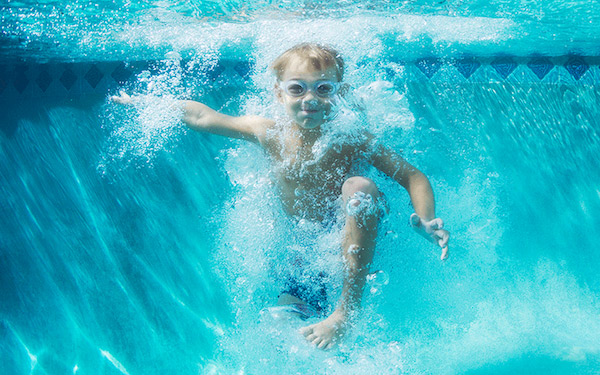Top tips for water safety

As summer approaches, families head outdoors for fun ways to beat the heat. One of the most cherished summertime activities is swimming — whether in a pool, lake or beach.
But each summer, it’s important to remind ourselves of the sobering statistic that drowning ranks among the leading causes of unintentional injury death in the U.S. according to the Centers for Disease Control and Prevention. Here are a few tips to keeping your family safe in the water this summer.
1. Don’t assume your child is safe, even if they know how to swim
Accidents happen. Assuming your child is safe can only lead to surprises when they are not. This is especially important in natural bodies of water (ponds, lakes, rivers and oceans) where unpredictable currents and debris can make even the best swimmers unsafe.
2. Always have adult supervision
There should always be an adult designated to supervise children in the water. They should have their eyes on the water at all times and be free of distractions (alcohol, cell phones, etc.). For infants and toddlers, “touch supervision” is essential, meaning an adult should be within arms-length at all times when young children are in or around water.
3. Don’t count on a lifeguard
A lifeguard can offer added protection, but even lifeguards can miss drowning, especially when there are a lot of kids for them to look after. Be sure to be an extra set of eyes by supervising your own children.
4. It’s never too early to start swimming lessons
Although your child may not fully understand swimming or be safe in the water alone, swimming lessons offer an opportunity to be safe around water.
5. Children who can’t swim need life jackets
U.S. Coast Guard-approved lifejackets are the only flotation devices acceptable to prevent drowning. Water wings, floaties, inner tubes, noodles or other foam toys cannot provide adequate protection. Lifejackets are not a replacement for adult supervision.
6. Protect your own pool from access
If you have a pool, install a four-sided pool fence with a 4-foot minimum height that completely separates the pool area from the house and yard. Consider additional barriers such as automatic door locks or alarms to prevent access or notify you if someone enters the pool area.
7. Learn CPR
In the unlikely case that something does happen, call 911 immediately and administer CPR until medical professionals arrive.
8. Educate yourself on dry and secondary drowning
Dry drowning happens when water causes a spasm in the airway. The airway then closes up and affects breathing. Secondary or delayed drowning can happen when water gets into the lungs and builds up over time. After a swim, keep an eye out for changes in your child’s behavior and call your doctor or 911 immediately if you notice the following symptoms: trouble breathing, coughing, fatigue, irritability, chest pain or vomiting.
Related Posts :
-

Help your child manage anxiety about school violence
With news of school shootings and other violence often reaching children, parents sometimes grapple with how to help their child ...
-

Which pain medication is right for your child? What a pediatrician wants parents to know
There’s no shortage of safe and effective pain medications for children. Acetaminophen (commonly known as Tylenol), ibuprofen (Motrin, Advil), ...
-

Going back to school with a chronic condition
Going back to school can be a time of excitement for many families: Your kids are looking forward to reconnecting ...
-

Helping clinicians embrace family-centered rounds
If you’ve ever been hospitalized, you may have experienced this: groups of doctors coming in and talking about you ...





